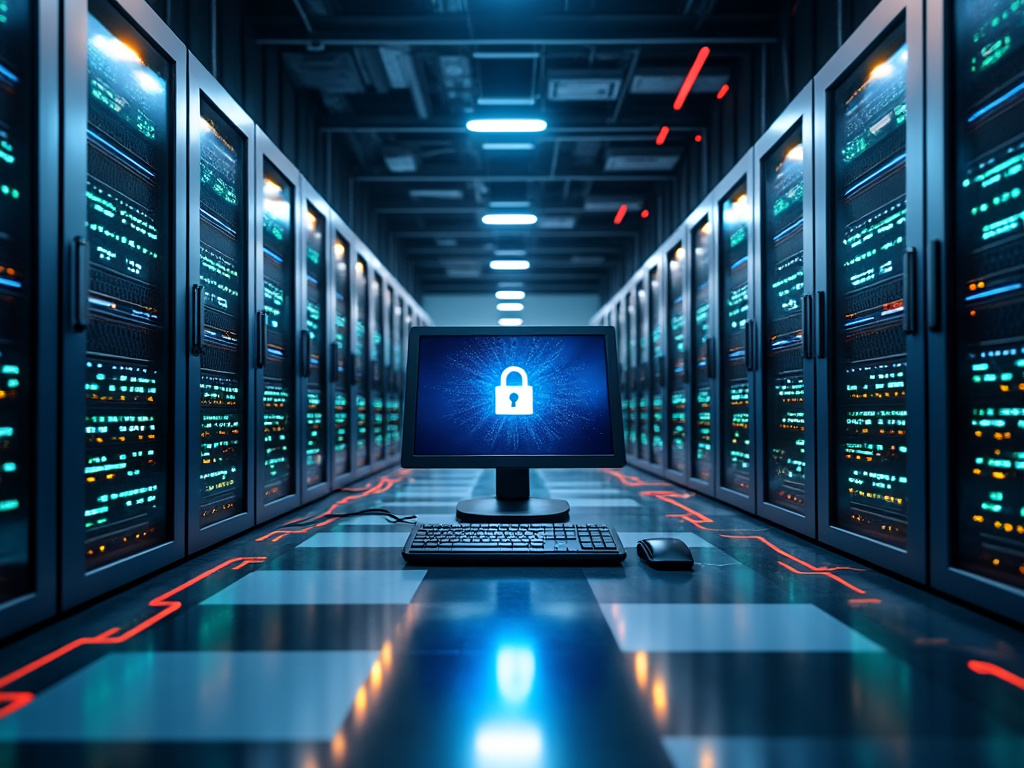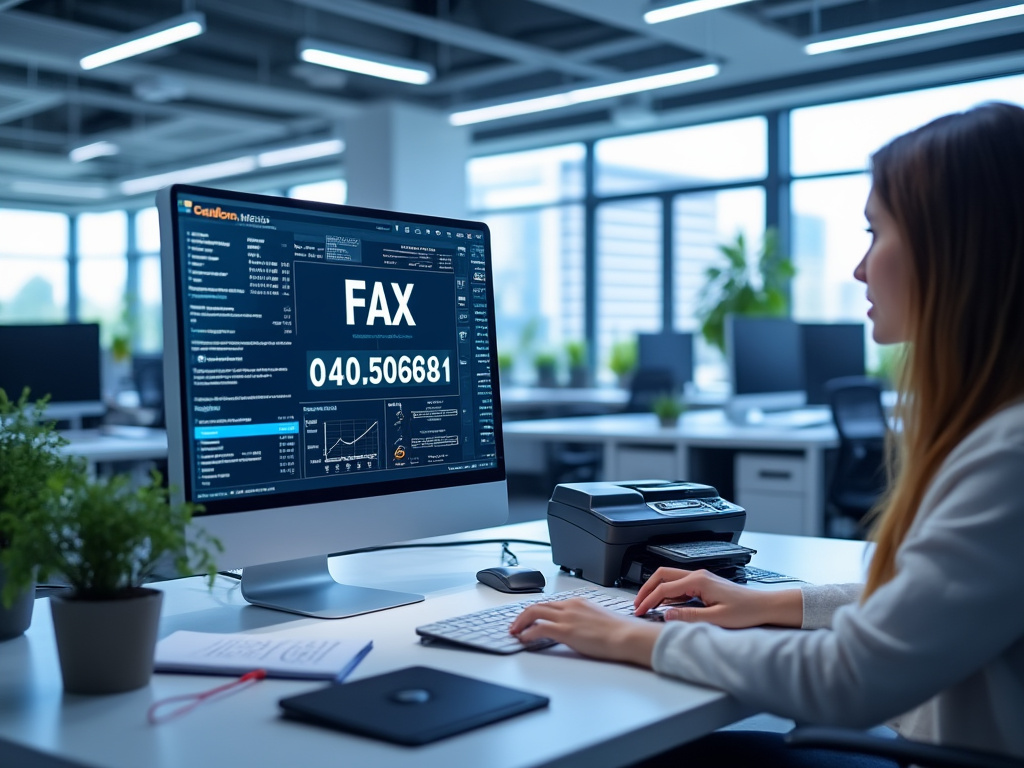Fax Security 101: Protecting Your Data When Faxing Online

Learn essential tips for secure online faxing, including how to protect your sensitive information and avoid services that compromise your data or business reputation.
8/31/2024
Online faxing offers convenience and efficiency, but it's crucial to prioritize security when transmitting sensitive documents. This guide provides essential tips for protecting your data when using online faxing services.
Why Fax Security Matters (Even in 2024)
In an age of advanced digital communication, you might wonder why fax security is still relevant. The truth is, many industries—particularly healthcare, legal, and finance—continue to rely on faxing for official documentation. Here's why fax security remains crucial:
- Regulatory Compliance: Many sectors must adhere to strict data protection regulations like HIPAA, GDPR, or CCPA.
- Legal Validity: Faxed signatures are often considered legally binding, making faxes a target for potential fraud.
- Sensitive Information: Faxes frequently contain confidential data that could be valuable to cybercriminals.
- Legacy Systems: Some organizations still use traditional fax machines, creating potential security gaps in the faxing process.
Common Security Risks in Online Faxing
Before we dive into protection strategies, let's identify some of the primary security risks associated with online faxing:
- Unsecured Transmission: Faxes sent over unsecured networks can be intercepted.
- Unauthorized Access: Weak authentication measures can allow unauthorized users to access faxed documents.
- Data Storage Vulnerabilities: Insecure storage of faxed documents on servers or cloud platforms.
- Phishing Attacks: Cybercriminals may use fake fax notifications to trick users into revealing sensitive information.
- Malware Distribution: Malicious files can be disguised as faxed documents.
Essential Tips for Secure Online Faxing
Now that we understand the risks, let's explore how to protect your data when faxing online:
1. Choose a Reputable Online Fax Service
The foundation of secure online faxing is selecting a trustworthy service provider. Look for these features:
- End-to-end encryption
- Compliance with relevant regulations (e.g., HIPAA, GDPR)
- Two-factor authentication (2FA)
- Secure cloud storage
- Regular security audits and updates
For more guidance on selecting the right fax service, check out our guide to choosing the best online fax service for your business.
2. Use Strong Authentication Methods
Protect your fax account with robust authentication:
- Create a strong, unique password
- Enable two-factor authentication (2FA)
- Use biometric authentication if available (e.g., fingerprint or facial recognition)
- Avoid sharing login credentials
3. Encrypt Your Faxes
Encryption is crucial for protecting your faxed documents during transmission and storage:
- Ensure your fax service uses TLS (Transport Layer Security) for data in transit
- Use a service that offers end-to-end encryption for stored faxes
- Consider encrypting sensitive documents before faxing them
4. Secure Your Network
Your network security plays a vital role in protecting your faxed data:
- Use a secure, password-protected Wi-Fi network
- Avoid public Wi-Fi when sending or receiving sensitive faxes
- Consider using a VPN for an extra layer of security
5. Implement Access Controls
Limit access to your faxed documents:
- Set up user roles and permissions within your fax service
- Use separate fax numbers for different departments or purposes
- Regularly review and update access lists
6. Be Cautious with Email-to-Fax Services
While convenient, email-to-fax services can introduce additional security risks:
- Use a dedicated email address for faxing
- Be wary of phishing attempts disguised as fax notifications
- Double-check recipient fax numbers before sending
7. Regularly Update Your Software
Keep your systems secure by staying up-to-date:
- Install updates for your operating system and web browser
- Keep your fax service's mobile app updated, if applicable
- Use up-to-date antivirus and anti-malware software
8. Educate Your Team
Human error is often the weakest link in security. Educate your team on fax security best practices:
- Conduct regular security awareness training
- Create and enforce a fax security policy
- Encourage reporting of suspicious activities
9. Securely Dispose of Faxed Documents
Proper disposal of faxed documents is crucial:
- Shred physical copies of sensitive faxes
- Securely delete digital copies when no longer needed
- Use a fax service that offers secure deletion options
10. Monitor Fax Activity
Keep an eye on your fax usage to detect any unusual activity:
- Regularly review fax logs and reports
- Set up alerts for suspicious activities (e.g., high volume of outgoing faxes)
- Investigate any unexplained fax transmissions promptly
11. Use Cover Sheets Wisely
Cover sheets can enhance security, but they need to be used correctly:
- Include only necessary information on cover sheets
- Avoid putting sensitive data on cover sheets
- Use standardized cover sheets with clear handling instructions
12. Verify Recipient Information
Misdirected faxes can lead to data breaches:
- Double-check fax numbers before sending
- Use address books to store frequently used numbers
- Consider implementing a confirmation system for sensitive faxes
13. Be Cautious with Cloud Storage
If your fax service uses cloud storage, take extra precautions:
- Understand where your faxed documents are stored
- Check the cloud provider's security measures and compliance certifications
- Use additional encryption for highly sensitive documents
14. Implement Fax Archiving and Retention Policies
Proper document management is key to long-term security:
- Develop a clear retention policy for faxed documents
- Use secure archiving solutions for long-term storage
- Regularly review and securely dispose of outdated documents
15. Consider Digital Signatures
For added security and authenticity:
- Use digital signatures for important documents
- Ensure your fax service supports digital signature verification
- Educate recipients on how to verify digital signatures
The Future of Fax Security
As technology evolves, so do the security measures for online faxing. Keep an eye on these emerging trends:
- Blockchain for Fax Security: Some providers are exploring blockchain technology to enhance the security and authenticity of faxed documents.
- AI-Powered Threat Detection: Artificial intelligence is being used to identify and prevent potential security threats in real-time.
- Integration with Secure Messaging Platforms: Fax services are increasingly integrating with secure messaging and collaboration tools for streamlined workflows.
Conclusion
While online faxing offers numerous benefits, it's crucial to prioritize security to protect your sensitive information. By following these tips and staying informed about the latest security practices, you can enjoy the convenience of online faxing without compromising your data or business reputation.
Remember, fax security is an ongoing process. Regularly review and update your security measures to stay ahead of potential threats. With the right precautions, online faxing can be a secure and efficient way to transmit important documents in 2024 and beyond.
Stay safe and happy faxing!
Other Posts You Might Like

5 Game-Changing Benefits of Online Faxing You Need to Know
Discover why online faxing is revolutionizing communication for businesses and individuals alike. Learn about cost savings, environmental benefits, accessibility, enhanced security, and seamless digital integration.
8/29/2024

How to Choose the Best Online Fax Service: A Comprehensive Guide
Navigate the world of online faxing with confidence. Learn how to evaluate and select the perfect online fax service for your needs, whether you're an individual or a business.
9/10/2024

The Ultimate Guide to Sending Faxes Online in 2024
Discover everything you need to know about online faxing, from the basics to advanced tips. Learn how it works, its benefits, and why it's still relevant in today's digital world.
9/3/2024